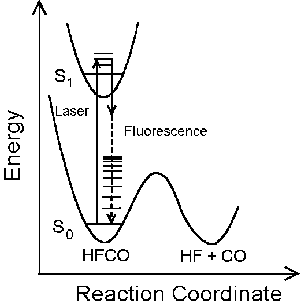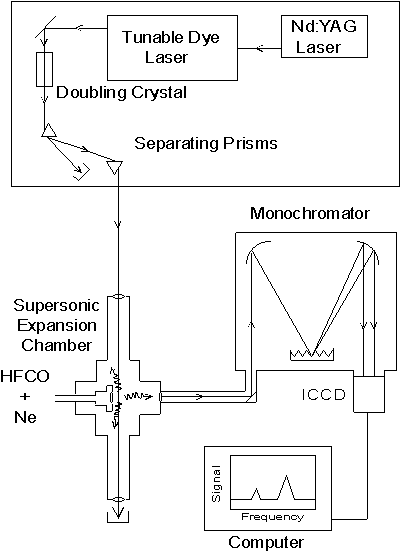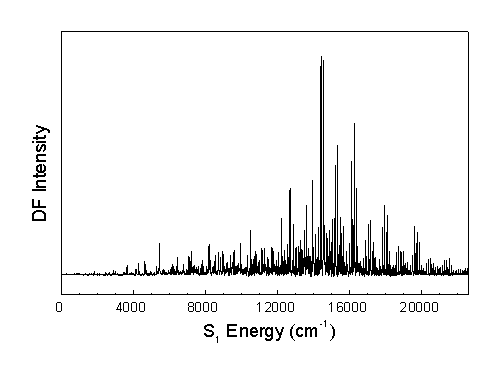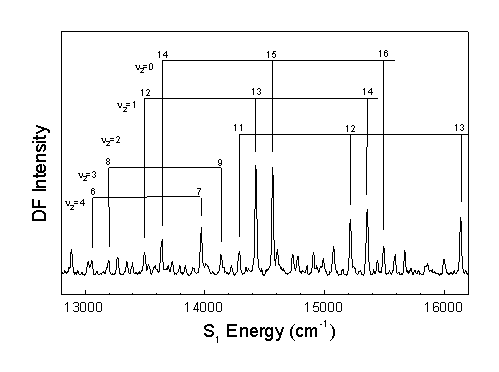
Todd P. Chassee, Katie M. Horsman, and William F. Polik
Hope College, Holland, MI 49423, USA
The Potential Energy Surface (PES) provides a fundamental description of a reaction mechanism. The PES of a molecule can be characterized by measuring its vibrational level spectrum. Dispersed Fluorescence (DF) spectroscopy is a useful method for observing vibrational energy levels over a wide energy range.
HFCO has a lower dissociation energy (17,000 cm-1) than H2CO (28,000 cm-1) studied previously. Consequently, HFCO has detectable fluorescence to vibrational levels below, at, and above the dissociation threshold. This allows experimental characterization of the PES both below and above the activation energy of a chemical reaction.

Light, molecules, and detection are the components of DF spectroscopy.

A Nd:YAG laser pumps a tunable dye laser. The laser light is converted to ultraviolet (UV) by the doubling crystal. A 60° prism separates the UV laser light from residual, undoubled light. The UV light is directed into the supersonic expansion chamber. HFCO molecules are seeded in neon, cooled in a supersonic expansion, and excited by the UV laser light. The fluorescence is imaged into a monochromator and dispersed onto an Intensified Charge Coupled Device (ICCD) detector. The DF spectrum is analyzed by a computer.
The energy spectrum of HFCO fluorescing from the overlapped 101, 202, and 303 rotational levels in the S1 62 vibronic state is presented below. The spectrum extends far beyond the 0 – 4,000 cm-1 range of traditional infrared spectroscopy. In particular, vibrational states are observed well above the 17,000 cm-1 dissociation threshold.

Some of the excited vibrational states have been assigned by Choi and Moore [J. Chem. Phys. 94, 5414 (1991)] as progressions in n 2 and n 6. However, this set of assignments is incomplete, as shown below. Analysis of the current spectrum will result in additional assignments and a better characterization of the HFCO potential energy surface.

The vibrational spectrum of S0 HFCO has been recorded up to 22,500 cm-1 using dispersed fluorescence spectroscopy. Assignment of this spectrum will characterize the important dissociation threshold region of the potential energy surface.
We gratefully acknowledge stipends from the Dreyfus Foundation and the National Science Foundation. This research has been sponsored by Wyckoff Chemical Company and National Science Foundation grant CHE-9157713.